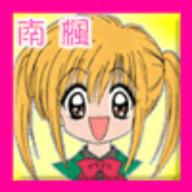人物代名詞的用法問題
2011-08-16 10:43 pm
I,ME,MY,MINE和MYSELF這四個字的用法有何分別?還有,我記得在小學的時侯,有教這方面的問題,而且還有一個表來做總結,不知大家可否重提這個表的內容和這個表叫做甚麼來著!
回答 (5)
2011-08-30 11:19 pm
I, me, my, mine
he, him, his, his
she, her, her, hers (第二個her, 讀"靴"; 第三個her, 讀"hu-er")
you, you, your, yours
they, them, their, theirs
we, us, our, ours
it, it, its, its
每行第一個, 用於主動詞, 例如, 我打你, I hit you, 我 (I) 是做出動作(hit)的, 要用第一個字; 即係如果話"他打她", 就要用 He hits her; you及her 係每行第二個字, 即被動詞, 是接受動作(hit)的人, 例如:"她打他" , 就要用 She hits him.
每行第三個字, 即係加個"的"字, 例如:'我的手袋" , 是 my handbag, 你的手袋, 是用your handbag, 我們的手袋, 就是our handbags
至於第四個字, 都係有加個"的"字的意思, 但用法在於用第三個字, 後面會跟個object物件, 例如 your bag, my pencil, her shoes, our money.. 而用第四個字,
後面沒有object的, 例如, 這個手袋是我的, this handbag is mine. 這足球是他們的, this football is theirs. 這對鞋是她的 this pair of shoes are hers.
至於 myself, 等同中文加上"自己"的意思, 例如 I do it myself. 我自己做的. She pay by herself, 她自己付款的...
令人混淆的, 是有幾個字, 在不同用法上都是同一個字, 例如 you, 主動詞及被同詞都係 YOU, 以及 HER, 被動詞及她的, 都是HER, 但讀法不同呢!
he, him, his, his
she, her, her, hers (第二個her, 讀"靴"; 第三個her, 讀"hu-er")
you, you, your, yours
they, them, their, theirs
we, us, our, ours
it, it, its, its
每行第一個, 用於主動詞, 例如, 我打你, I hit you, 我 (I) 是做出動作(hit)的, 要用第一個字; 即係如果話"他打她", 就要用 He hits her; you及her 係每行第二個字, 即被動詞, 是接受動作(hit)的人, 例如:"她打他" , 就要用 She hits him.
每行第三個字, 即係加個"的"字, 例如:'我的手袋" , 是 my handbag, 你的手袋, 是用your handbag, 我們的手袋, 就是our handbags
至於第四個字, 都係有加個"的"字的意思, 但用法在於用第三個字, 後面會跟個object物件, 例如 your bag, my pencil, her shoes, our money.. 而用第四個字,
後面沒有object的, 例如, 這個手袋是我的, this handbag is mine. 這足球是他們的, this football is theirs. 這對鞋是她的 this pair of shoes are hers.
至於 myself, 等同中文加上"自己"的意思, 例如 I do it myself. 我自己做的. She pay by herself, 她自己付款的...
令人混淆的, 是有幾個字, 在不同用法上都是同一個字, 例如 you, 主動詞及被同詞都係 YOU, 以及 HER, 被動詞及她的, 都是HER, 但讀法不同呢!
2011-08-17 11:33 am
呢個都唔識可以話等於唔識英文
首先我邀請你到我新建既FACEBOOK 平台問英文有關知識
http://www.facebook.com/#!/pages/EnglishShare/116718348427333
得閒睇睇﹐有好多資源同經驗參考
言歸正傳
i we,
you,
he she it
以上為代替名詞, 分三類
第一人稱即係我, 或者我地
第二人稱即係你, 或者你地
第三人稱即係佢, 或者佢地
i we , 第一人稱
YOU 第二人稱
HE SHE IT they 第三人稱
以上為句字或字句開頭用
其他為較深, 我建議你去呢個網址睇
http://www.facebook.com/note.php?saved&¬e_id=118561401576361&id=116718348427333
揀個english club 個網址﹐然係入到去打pronoun 就搵到
唔明記住係FACEBOOK 留言
首先我邀請你到我新建既FACEBOOK 平台問英文有關知識
http://www.facebook.com/#!/pages/EnglishShare/116718348427333
得閒睇睇﹐有好多資源同經驗參考
言歸正傳
i we,
you,
he she it
以上為代替名詞, 分三類
第一人稱即係我, 或者我地
第二人稱即係你, 或者你地
第三人稱即係佢, 或者佢地
i we , 第一人稱
YOU 第二人稱
HE SHE IT they 第三人稱
以上為句字或字句開頭用
其他為較深, 我建議你去呢個網址睇
http://www.facebook.com/note.php?saved&¬e_id=118561401576361&id=116718348427333
揀個english club 個網址﹐然係入到去打pronoun 就搵到
唔明記住係FACEBOOK 留言
2011-08-17 5:10 am
2011-08-16 10:57 pm
人物代名詞的用法問題I,ME,MY,MINE和MYSELF這四個字的用法有何分別
I - subject She, He, it , we, they
I am a boy,
I go to school everyday.
Me - object her him it us them
Please call me.
He is going to school with me everyday.
MY / mine = possessive pronoun
This is my pencil.
This pencil is mine or This is mine
She = her pencil ( hers)
He = his pencil (his)
It = its tail (its)
They = their pencils (theirs)
Myself = reflexive pronoun herself himself, itself ourselives, themselves
I do the homework myself.
I have finished the project by myself = I have finished the project without any help by others.
I have also indicated other pronouns for your reference and hope it is clear
I - subject She, He, it , we, they
I am a boy,
I go to school everyday.
Me - object her him it us them
Please call me.
He is going to school with me everyday.
MY / mine = possessive pronoun
This is my pencil.
This pencil is mine or This is mine
She = her pencil ( hers)
He = his pencil (his)
It = its tail (its)
They = their pencils (theirs)
Myself = reflexive pronoun herself himself, itself ourselives, themselves
I do the homework myself.
I have finished the project by myself = I have finished the project without any help by others.
I have also indicated other pronouns for your reference and hope it is clear
2011-08-16 10:46 pm
i we he she they it
收錄日期: 2021-04-20 01:06:33
原文連結 [永久失效]:
https://hk.answers.yahoo.com/question/index?qid=20110816000051KK00635

